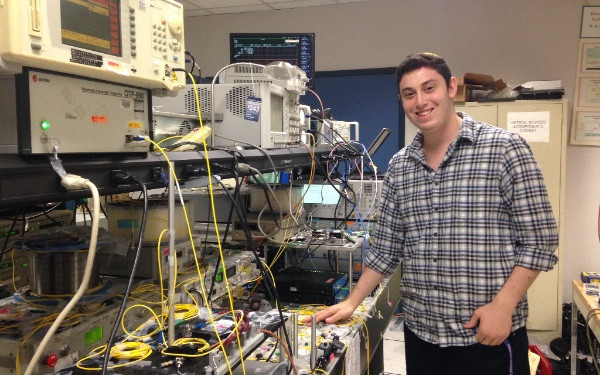A (laser) light unto the nations
When Asher Willner, a senior at Yeshiva University High School of Los Angeles (YULA), started a senior year engineering project in his father’s optical communica-tions laboratory at the University of Southern California, he couldn’t envision where it would transmit him. But next week, beginning March 15, Asher will present his research at the Intel Science Talent Search competition as one of 40 finalists among 1,750 applicants.
“When I submitted my application, it was just to see what would happen,” says Asher, who is the contest’s only Orthodox Jewish finalist as well as its only finalist from a Jewish day school of any denomination. “I didn’t expect much—this is very exciting.”
For his project, Asher worked with Ph.D.-track graduate student mentors to encode digital data by rapidly changing the “twisted” shape of a laser beam, with different shapes representing different data bit sequences.
“We’re always trying to increase data transmission capacity,” Asher tells JNS.org.
The results of his project allow for the transmission of 20 billion bits of data in one second, resulting in increased data capacity. Twenty-billion bits is the equivalent of a full-length movie.
Asher says his engineering inspiration comes from years of watching his father at work in the lab—though admittedly, it wasn’t until he was much older that he actually understood what his father does for a living—and from the two years he spent participating in the CIJE-Tech Program at YULA.
CIJE-Tech is a project-based, two-year program focusing on scientific and biomedical engineering. Developed by the Center for Initiatives in Jewish Education, CIJE-Tech exposes students to a diverse range of science and technical knowledge areas, while helping to develop abstract thinking, leadership, and teamwork skills.
Judy Lebovits, vice president and director of CIJE, explains that CIJE-Tech tries to instill in student participants self-confidence and a drive to try new things.

 50.0°,
Mostly Cloudy
50.0°,
Mostly Cloudy 




